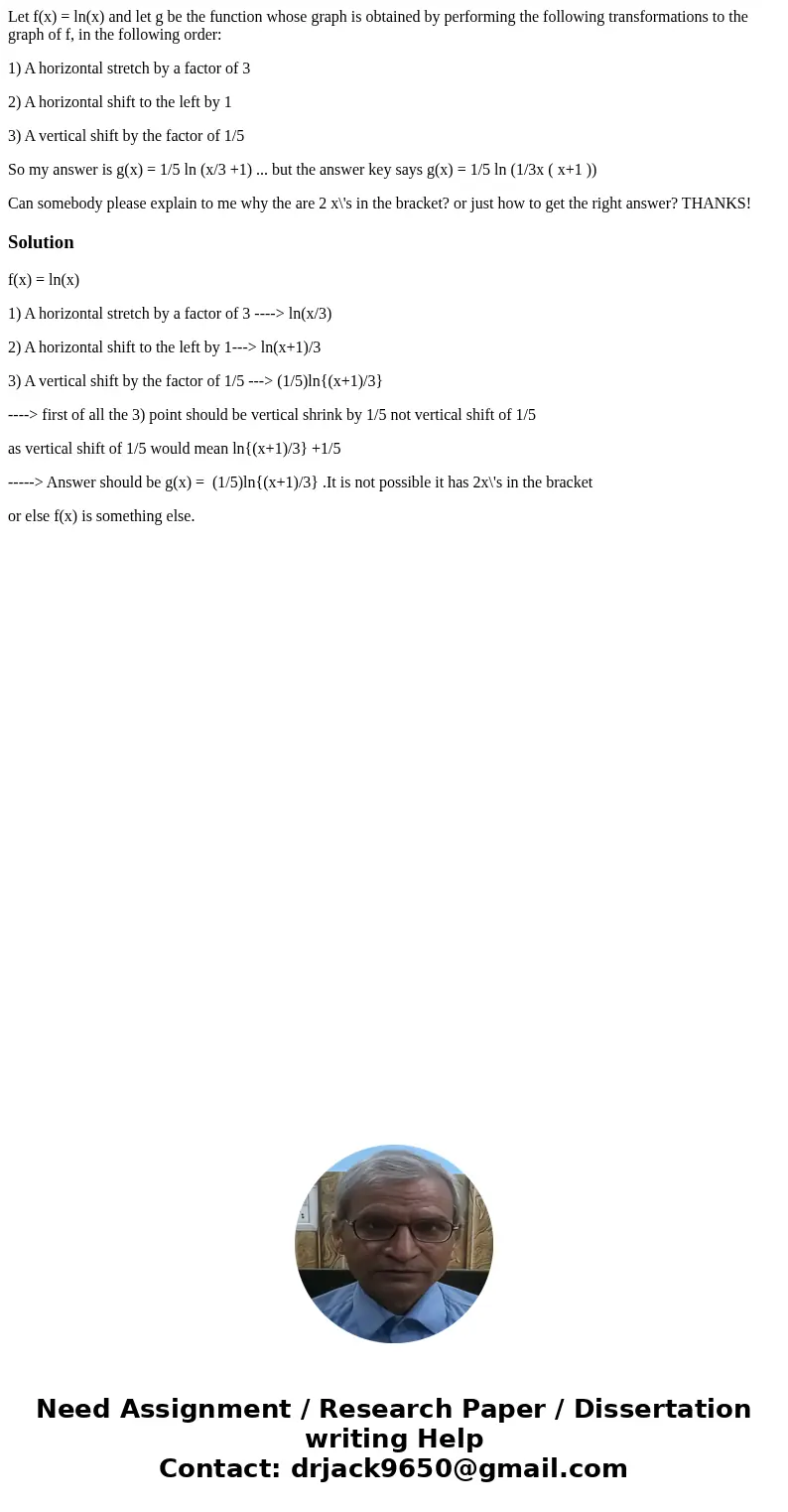Let fx lnx and let g be the function whose graph is obtaine
Let f(x) = ln(x) and let g be the function whose graph is obtained by performing the following transformations to the graph of f, in the following order:
1) A horizontal stretch by a factor of 3
2) A horizontal shift to the left by 1
3) A vertical shift by the factor of 1/5
So my answer is g(x) = 1/5 ln (x/3 +1) ... but the answer key says g(x) = 1/5 ln (1/3x ( x+1 ))
Can somebody please explain to me why the are 2 x\'s in the bracket? or just how to get the right answer? THANKS!
Solution
f(x) = ln(x)
1) A horizontal stretch by a factor of 3 ----> ln(x/3)
2) A horizontal shift to the left by 1---> ln(x+1)/3
3) A vertical shift by the factor of 1/5 ---> (1/5)ln{(x+1)/3}
----> first of all the 3) point should be vertical shrink by 1/5 not vertical shift of 1/5
as vertical shift of 1/5 would mean ln{(x+1)/3} +1/5
-----> Answer should be g(x) = (1/5)ln{(x+1)/3} .It is not possible it has 2x\'s in the bracket
or else f(x) is something else.

 Homework Sourse
Homework Sourse